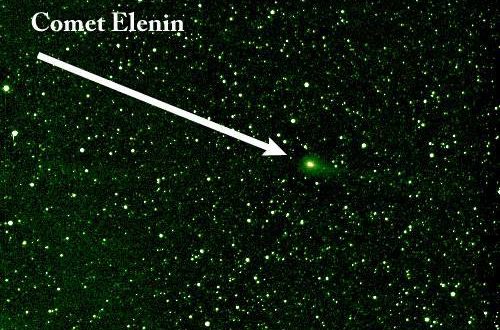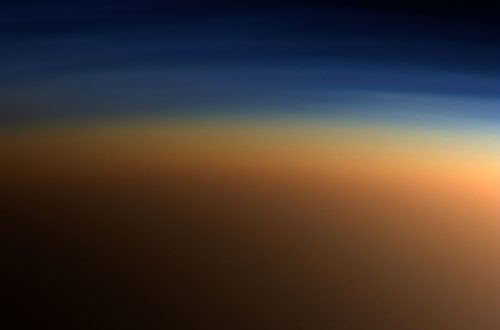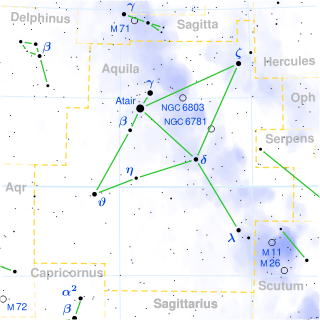Stargazing Calendar for October 2023
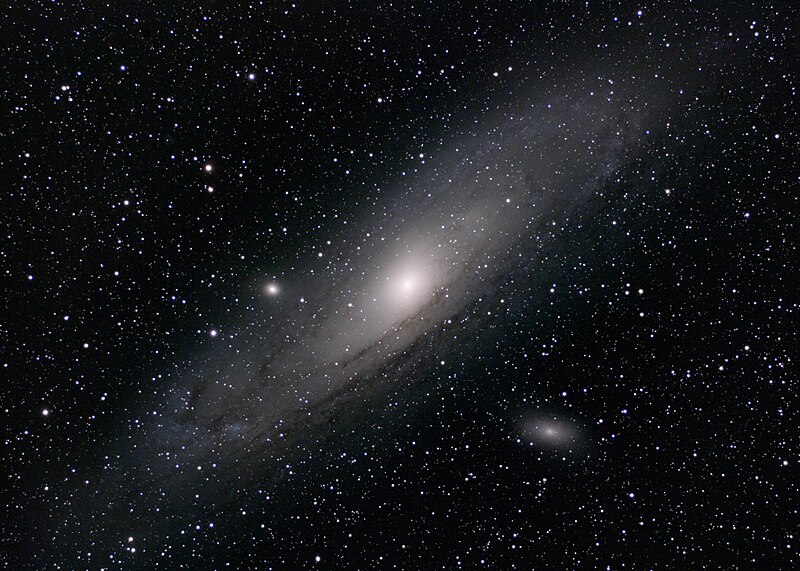
Looking for the October 2024 stargazing calendar?
October brings forth a celestial extravaganza, showcasing a stunning array of astronomical wonders. From planetary alignments to meteor showers and eclipses, the month offers a dazzling display for stargazers. This guide provides an overview of the month’s key events, highlighting their significance and optimal viewing conditions. Whether you’re a seasoned stargazer or a casual observer, October’s celestial lineup promises an enchanting experience that will leave you marveling at the beauty of our universe!
Would you like to be notified of stargazing events?
Summary of Meteor Showers in October 2023
- Ν Eridanids: Start on September 1; peak on September 6; end on October 29.
- Daytime Sextantids: Start on September 9; peak on September 27; end on October 9.
- October Camelopardalids: Start on October 5; peak on on October 6; end on October 6.
- Draconids: Start on October 6; peak on October 8; end on October 10.
- Southern Taurids: Start on September 10; peak on October 10; end on November 20.
- δ-Aurigids: Start on October 10; peak on October 11; end on October 18.
- ε-Geminids: Start on October 14; peak on October 18; end on October 27.
- Orionids: Start on October 2; peak on October 22; end on November 07.
- Leonis Minorids: Start on October 19; peak on October 24; end on October 27.
- Northern Taurids: Start on October 20; peak on November 12; end on December 10.
Summary of Eclipses in October 2023
- Annular solar eclipse on October 14.
- Partial lunar eclipse on October 28.
Summary of Conjunctions in October 2023
- Conjunction of the Moon and Jupiter in Aries on October 1.
- Conjunction of the Moon and Venus in Leo on October 10.
- Conjunction of the Moon and Saturn in Aquarius on October 24.
- Conjunction of the Moon and Jupiter in Aries on October 29.
October 1: Conjunction of the Moon and Jupiter
The Moon and Jupiter will be at conjunction by sharing the same right ascension and passing within 3°23′ of each other.
At nearly the same time the two bodies will also make a close approach (appulse) reaching 3°08′ from each other, but no longer sharing the same right ascension.
Both celestial bodies will be visible in the constellation of Aries with apparent magnitudes of -12.6 for the Moon and -2.8 for Jupiter. The Moon will be 16 days old or waning gibbous.
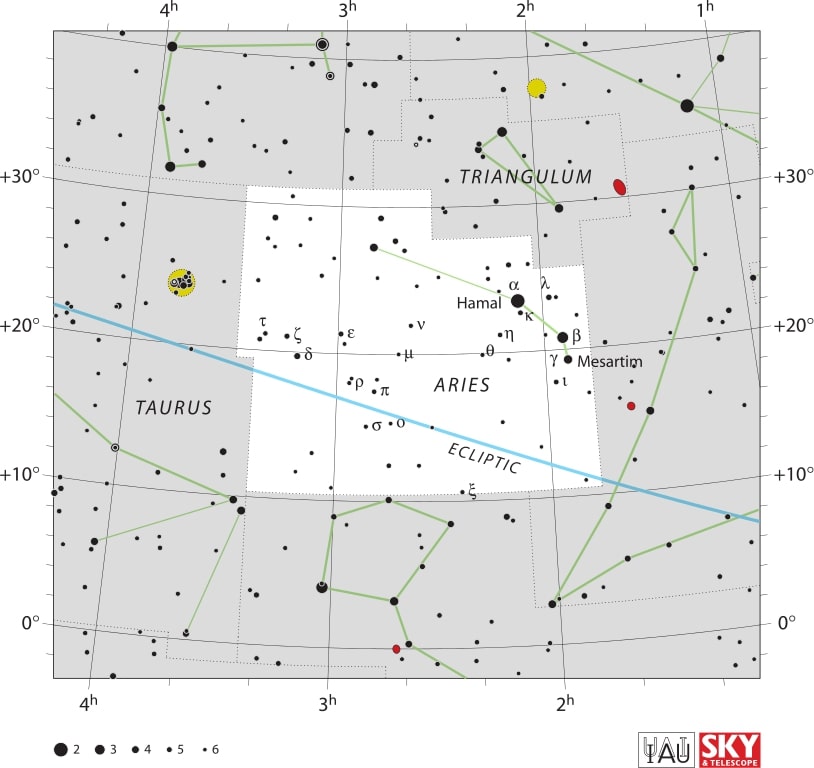
October 2: Asteroid 29 Amphitrite at opposition
Asteroid 29 Amphitrite will reach opposition, when it lies opposite to the Sun in the sky, reaching the highest point in the sky around midnight local time, regardless of where in the world you are located.
This asteroid will come within 1.426 AU of us, reaching a peak brightness of magnitude 8.8. Unfortunately it’s much too dim to be visible to the naked eye, so a telescope of moderate aperture will be needed. Point it at the constellation of Pisces. The bright Moon will interfere as it will be waning gibbous at 17 days old.
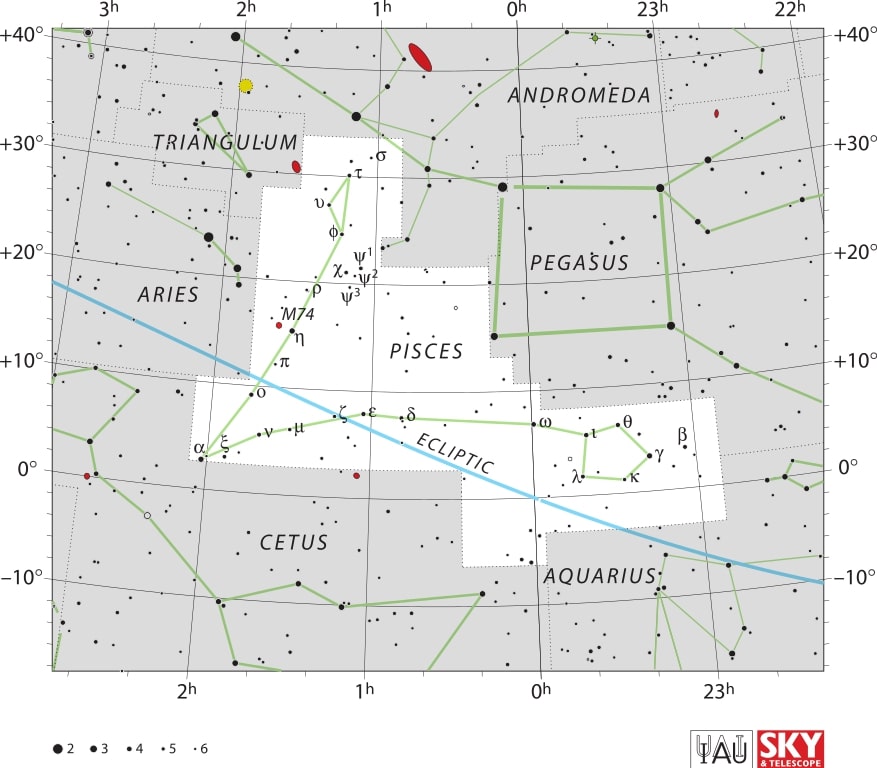
Amphitrite was discovered in 1854 by Albert Marth and named after a sea goddess, consort of Poseidon and symbolic representation of the sea in Greek mythology.
It is an S-type asteroid, with a mean diameter of just over 200 km, which would make it the fifth largest asteroid in the belt.
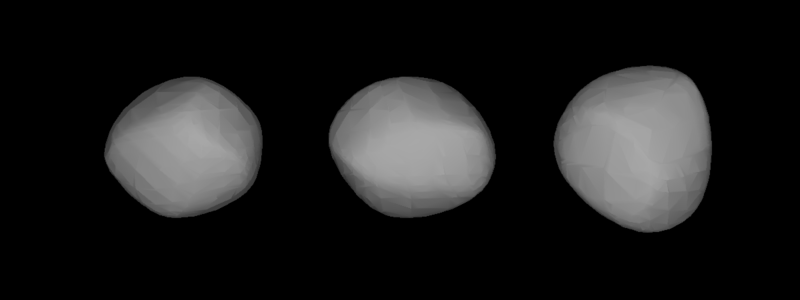
October 2: The Andromeda Galaxy at its highest point in the sky
The largest galaxy in the local group, Andromeda (Messier 31, M31, or NGC 224), will reach its highest point in the sky at around midnight local time.
It will reach apparent magnitude 3.4, but unfortunately the Moon will be interfering with observation because it will be waning gibbous at 17 days old. It would be very difficult to spot with the naked eye, but quite easy with a pair of binoculars or a small telescope. Look in the constellation of Andromeda, after which the galaxy was named.
The Andromeda Galaxy looks like such a small pinprick of light when observed from Earth, but in reality you’re looking at one trillion stars there!
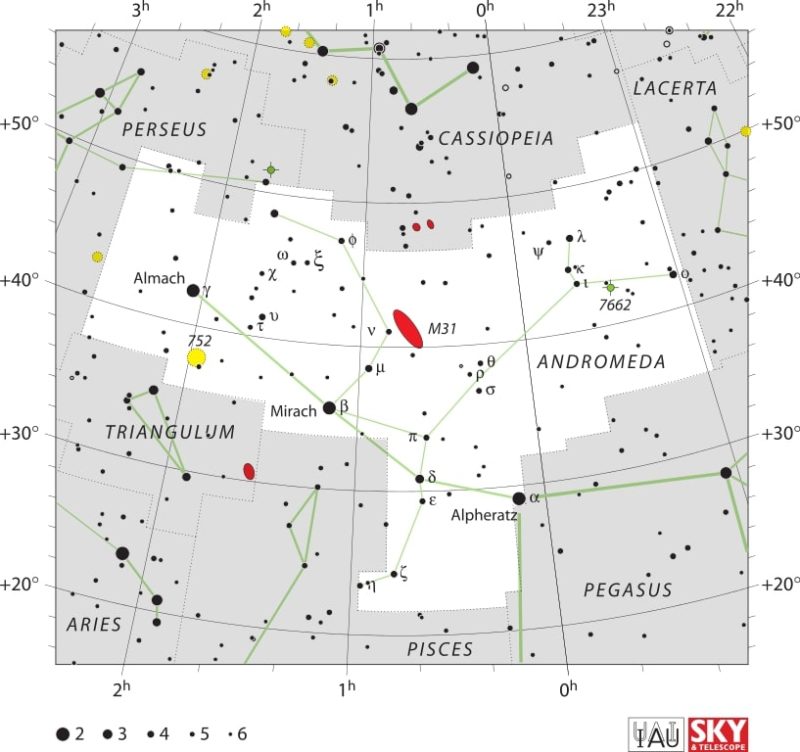
October 6: October Camelopardalid meteor shower peak
The October Camelopardalids are a small variable meteor shower that will peak on October 6. It is one of the shortest meteor showers with only two days in total. It will start on October 5 and end on October 6.
The meteors will appear to radiate from a point between the constellations of Camelopardalis and Draco at an average speed of 46 km/s. The Moon will be a waning crescent at 21 days old.
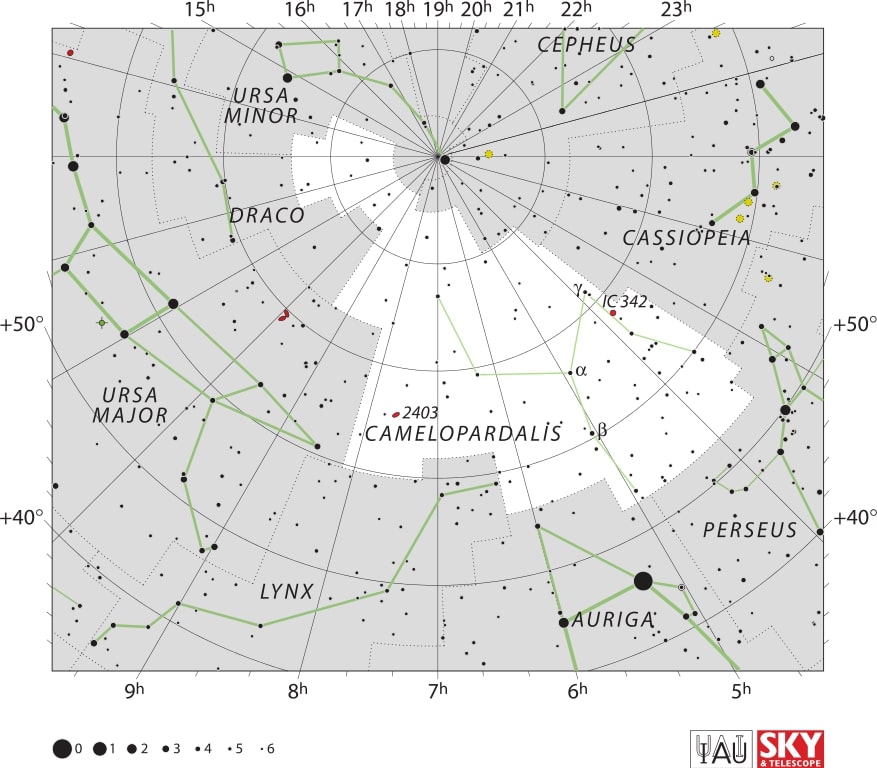
October 8: Draconid meteor shower peak
The Draconids will peak on October 8 with a variable rate of meteors. Some meteors will also be visible from October 6 to October 10 and they will appear to radiate from the constellation of Draco at an average speed of 20 km/s. They originate from debris left by the comet 21P/Giacobini–Zinner. The Moon will be a waning crescent at 24 days old.
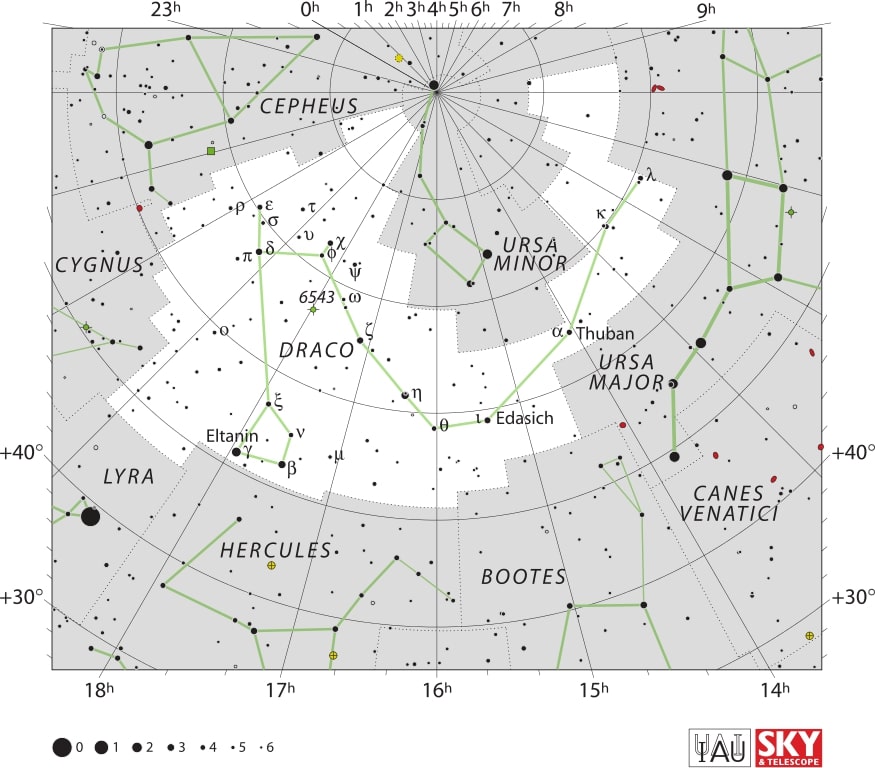
October 10: Conjunction of the Moon and Venus
The Moon and Venus will be in conjunction because they will have the same right ascension and will pass within 6°29′ of each other.
Around the same time, the two bodies will make a close approach (appulse), reaching 5°54′ from each other but no longer sharing the same right ascension.
Both celestial bodies will be visible in the constellation of Leo with apparent magnitudes of -10.6 for the Moon and -4.5 for Venus. The Moon will be a waning crescent at 25 days old.
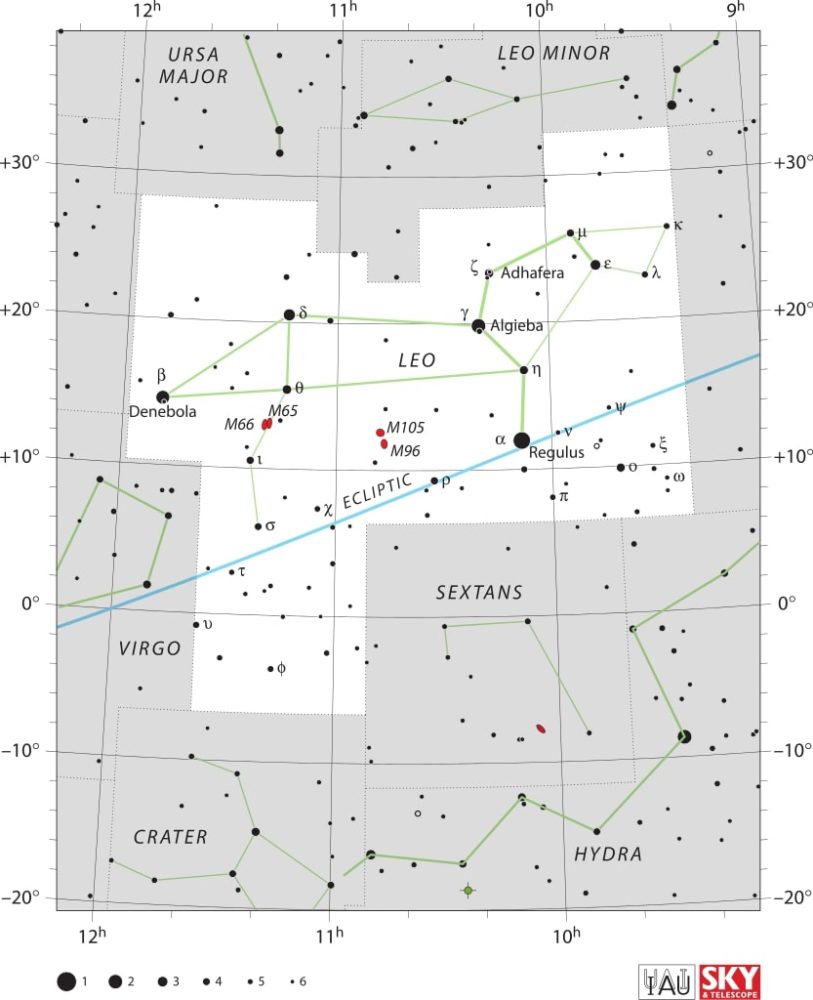
October 10: Southern Taurid meteor shower peak
The Southern Taurids are a small meteor shower with an average of 5 meteors per hour during the peak if conditions are ideal. However small it is during the peak, this meteor shower is very long lasting: from September 10 all the way to November 20.
Meteors will appear to radiate from the constellation of Taurus at an average speed of 27 km/s. They originate from debris of the comet Encke. During the peak, the Moon will be a waning crescent at 25 days old.
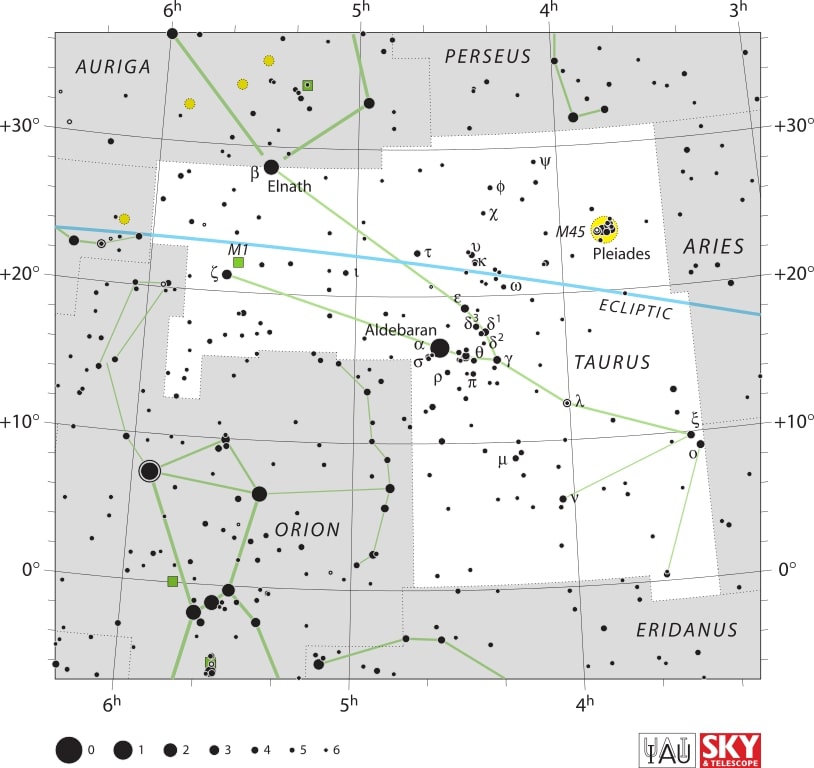
October 11: δ-Aurigid meteor shower peak
The Delta Aurigids are another small meteor shower with a peak of only 2 meteors per hour on average, assuming ideal conditions. During the peak the Moon will be a waning crescent at 26 days old.
Some meteors may also be seen between October 10 and 18. They will appear to radiate from the constellation of Auriga at the fast speed of 64 km/s on average.
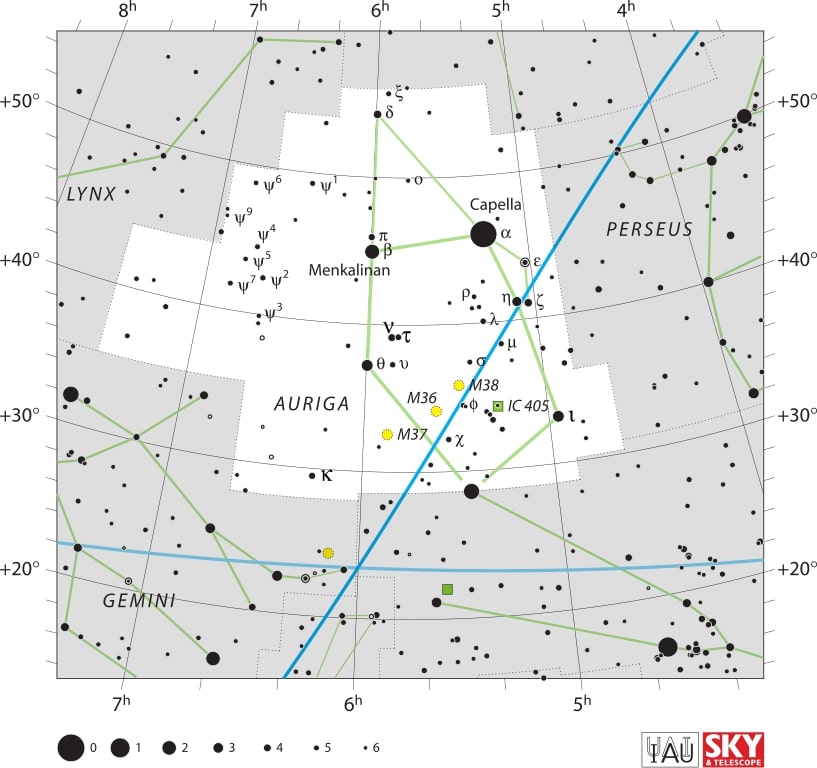
October 14: Annular solar eclipse
An annular solar eclipse happens when the Moon is too far away from the Earth to completely cover the Sun. This creates a ring of light around the darkened Moon. The corona is not visible during an annular eclipse.
The eclipse will begin in the Pacific Ocean off the coast of southern Canada and continue across the southwestern United States, Central America, Columbia, and Brazil. A partial eclipse will also be visible across much of North and South America.
Be careful to not look directly at the Sun and especially not to point a telescope at it. This is very dangerous to your eyes.
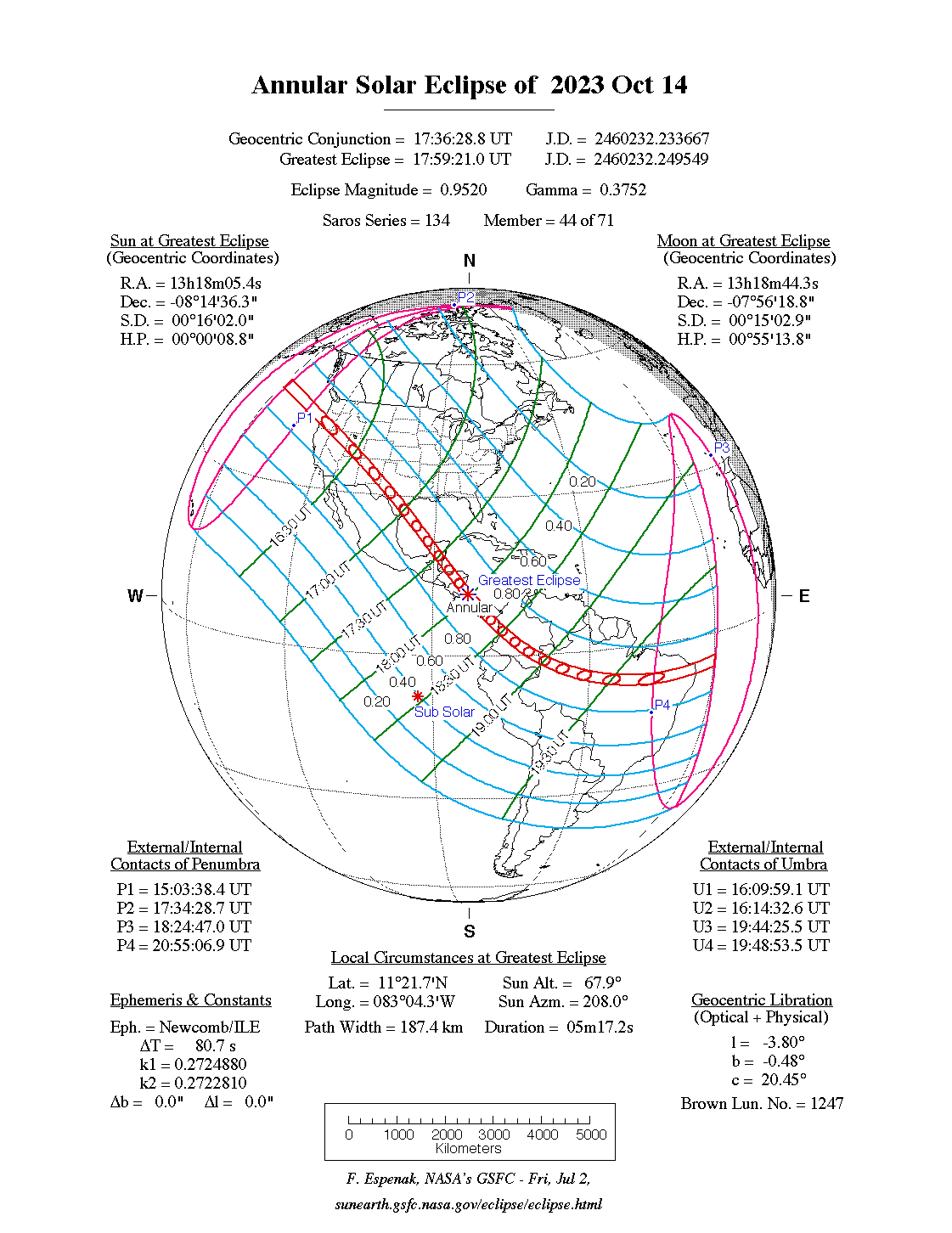
October 15: The Triangulum Galaxy at its highest point in the sky
The Triangulum Galaxy (Messier 33, M33, or NGC 598) will reach its highest point in the sky at around midnight local time. It can be found in the Triangulum constellation, not far from its neighbor the Andromeda Galaxy.
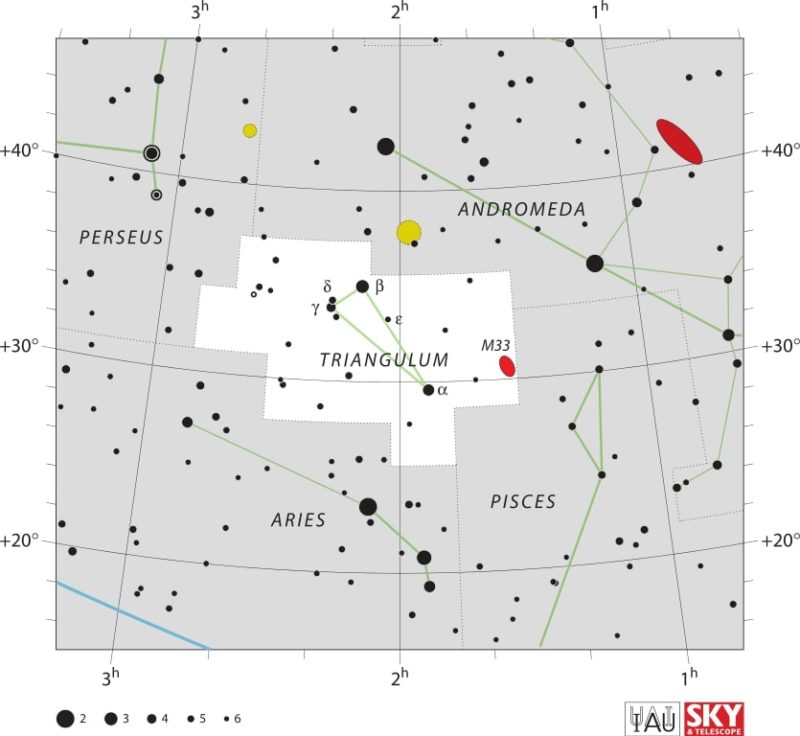
It will reach apparent magnitude 5.8 with almost no interference from the Moon, which will be only one day old or a very thin waxing crescent. Even so, it would be extremely difficult to spot with the naked eye, so a pair of binoculars or a small telescope would be recommended.
The Triangulum Galaxy is the third-largest galaxy in the Local Group, after Andromeda and Milky Way. It is 3.2 million light-years away from us and contains an estimated 40 billion stars.
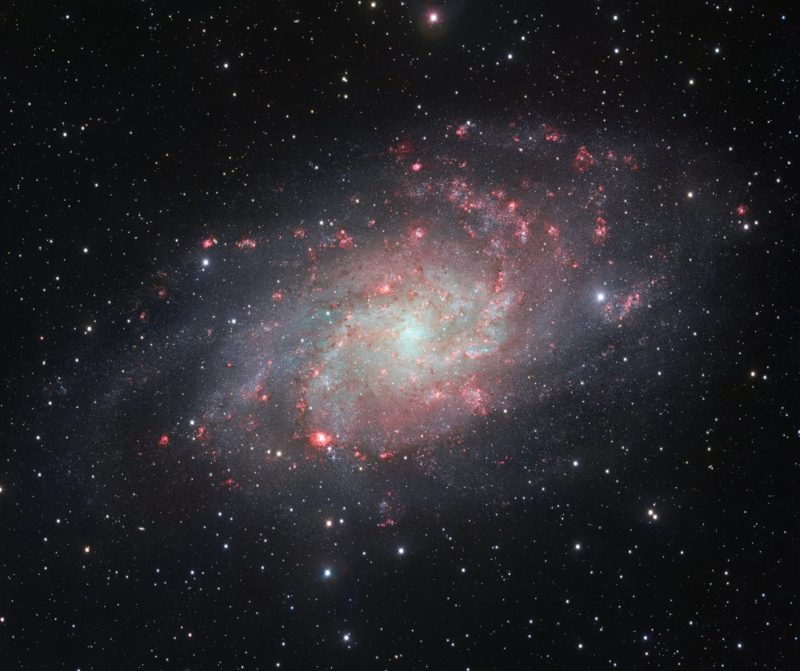
October 18: ε-Geminid meteor shower peak
The Epsilon Geminids are a small meteor shower with only 3 meteors on average during the peak if conditions are perfect. Although the peak is on October 18, some meteors could also be spotted between October 14 and 27.
The meteors will appear to radiate from the constellation of Gemini at the fast average speed of 70 km/s. They originate from debris of the comet C/1964 N1 (Ikeya).

October 18: Dwarf planet Eris at opposition
On the night of October 18, the dwarf planet 136199 Eris will reach a point opposite to the Sun in the sky, known as an opposition. This will happen around midnight local time, regardless of where in the world you are.
With an apparent magnitude of 18.6, you will most definitely need a powerful telescope. If you have access to one, look in the constellation of Cetus. The Moon won’t be interfering much because it will be a thin waxing crescent at 4 days old.
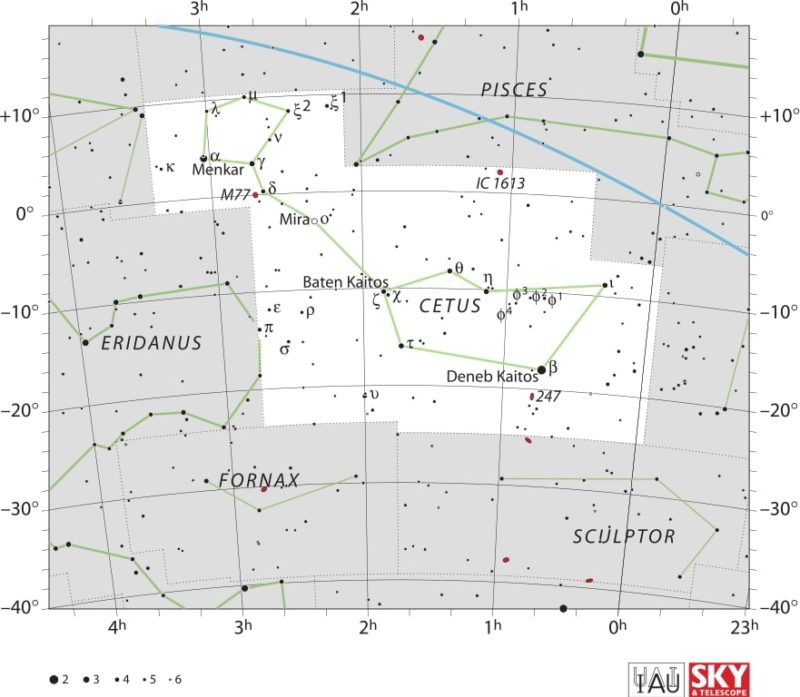
At about the same time, Eris will also make its closest approach to the Earth (perigee) at a distance of 94.75 AU, making this the best time to observe the dwarf planet.
Eris was discovered in 2005 by the team of Mike Brown, Chad Trujillo, and David Rabinowitz and named after the Greek goddess of strife and discord. It has an estimated mean diameter of 2326 and an equatorial surface gravity of 0.084. It is only slightly smaller in diameter, yet much more massive than Pluto.
A large moon has also been discovered around the dwarf planet and named Dysnomia after the daughter of the Greek goddess Eris. It has a mean diameter of about 615 km.
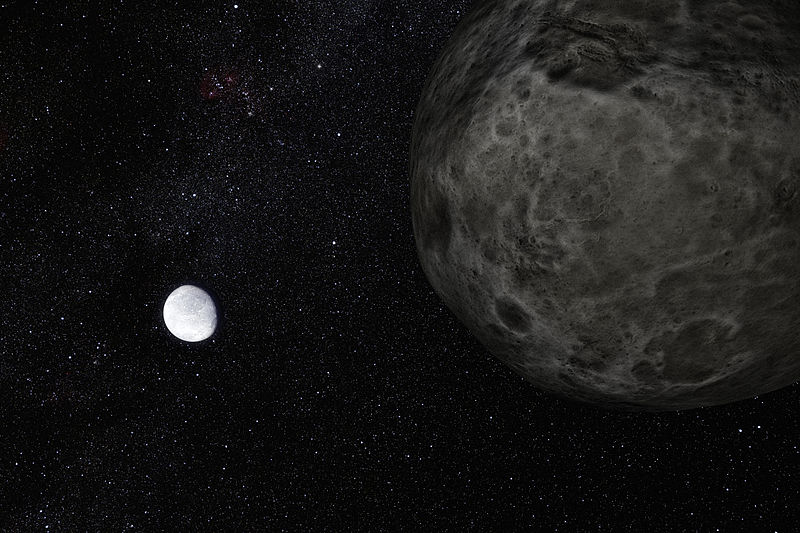
ESO/L. Calçada and Nick Risinger. License: CC BY 4.0.
October 22: Orionid meteor shower peak
The Orionids are a medium sized meteor shower with an average of 15 meteors during the peak if conditions are optimal. Although the peak of this meteor shower is October 22, some meteors can also be seen between October 2 and November 7.
The meteors will appear to radiate from the constellation of Orion at the fast speed of 66 km/s on average. They originate from debris left behind by the famous Halley’s Comet. The Moon will be waxing gibbous at 8 days old.
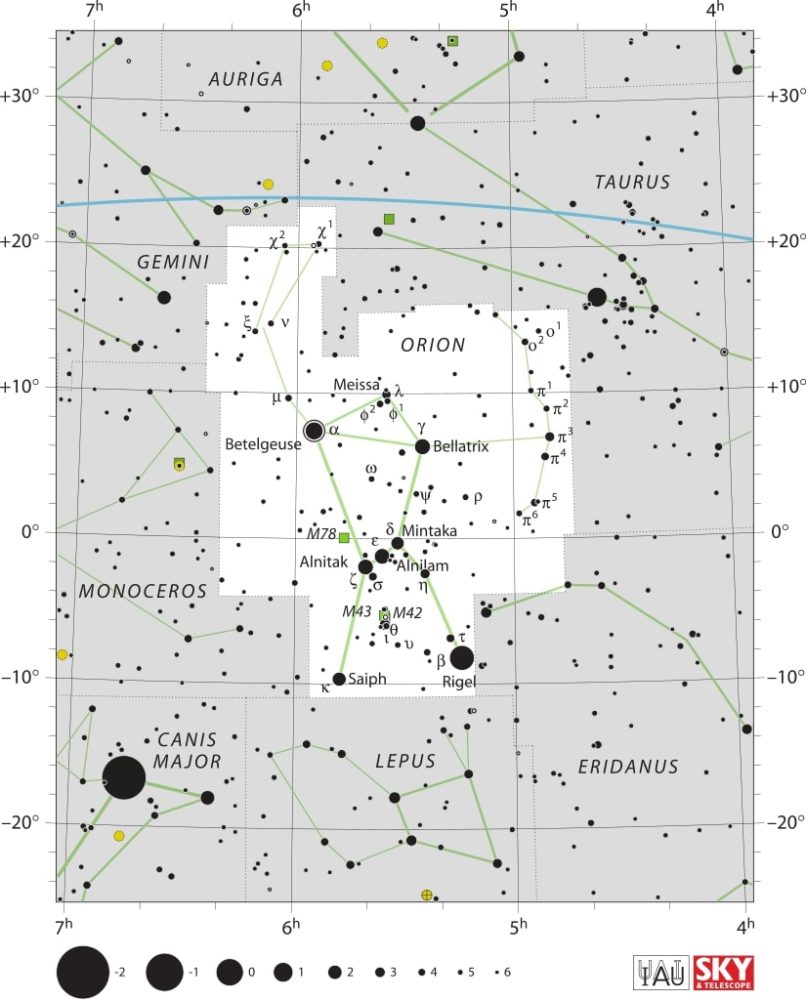
October 22: Comet 2P/Encke at perihelion
The comet Encke (official designation: 2P/Encke) will make its closest approach to the Sun (known as perihelion) on October 22, at a distance of 0.34 AU. It will be located in the constellation of Virgo at an apparent magnitude of 6.2. As mentioned earlier, the Moon will be waxing gibbous at 8 days old.
Comet Encke was discovered in 1786 by Pierre Méchain, who didn’t know it was a periodic comet. This fact was only discovered in 1819 by Johann Franz Encke when he calculated the orbit of the comet.
Encke is a periodic comet that completes an orbit of the Sun once every 3.3 years. Such a short orbital period means that this comet spends most of its time in the asteroid belt, never crossing Jupiter’s orbit, and periodically dipping sunward into the inner solar system.
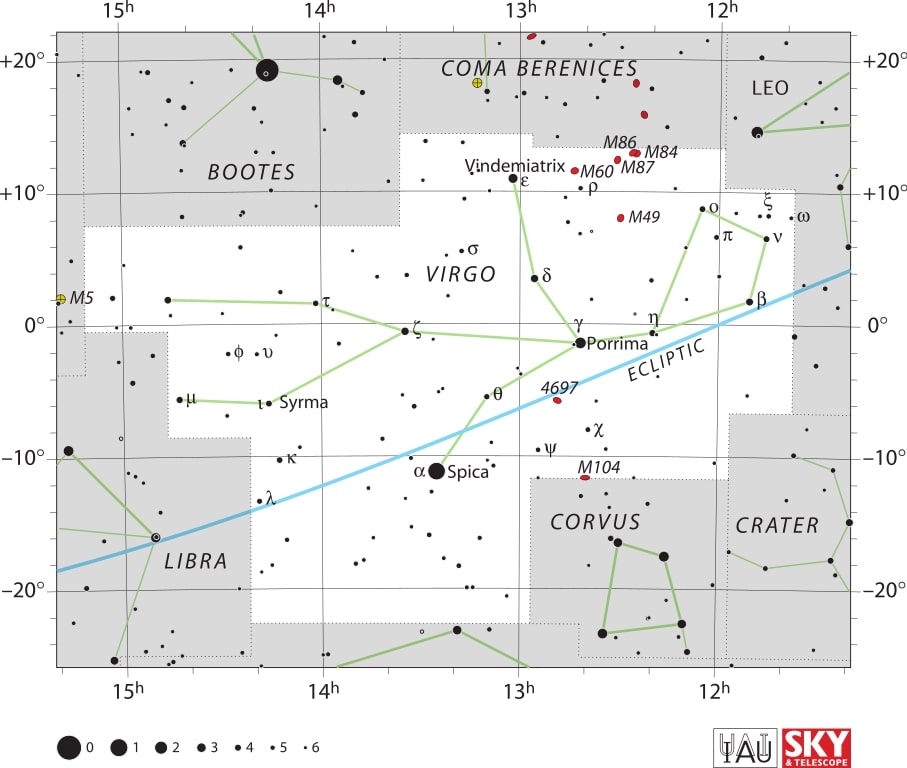
October 24: Conjunction of the Moon and Saturn
The Moon and Saturn will be at conjunction by reaching 2°46′ from each other while sharing the same right ascension. The pair will be too far apart to be visible together using a telescope, but they will be viewable with the naked eye or a pair of binoculars.
Shortly after the conjunction, the Moon and Saturn will get even closer to each other at 2°32′ during the appulse, but no longer sharing the same right ascension.
The two bodies can be seen in the constellation of Aquarius with an apparent magnitude of -12.4 for the Moon and 0.5 for Saturn. The Moon will be waxing gibbous at 10 days old.
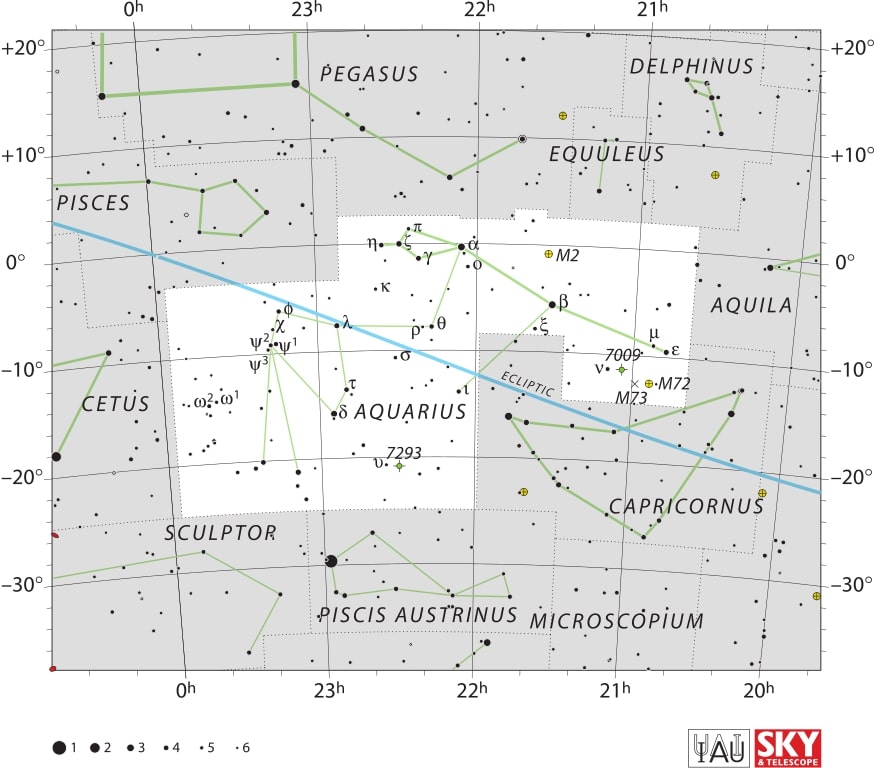
October 24: Leonis Minorid meteor shower peak
The Leonis Minorids are the final meteor shower to peak this month of October. It is a small one with only 2 meteors per hour on average during the peak, with ideal viewing conditions. Unfortunately the viewing conditions will not be ideal because of the Moon’s interference. It will be waxing gibbous at 11 days old.
Some meteors can also be seen between October 19 and 27, radiating from the constellation of Leo Minor at the high average speed of 62 km/s. The originate from debris of the comet C/1739 K1.
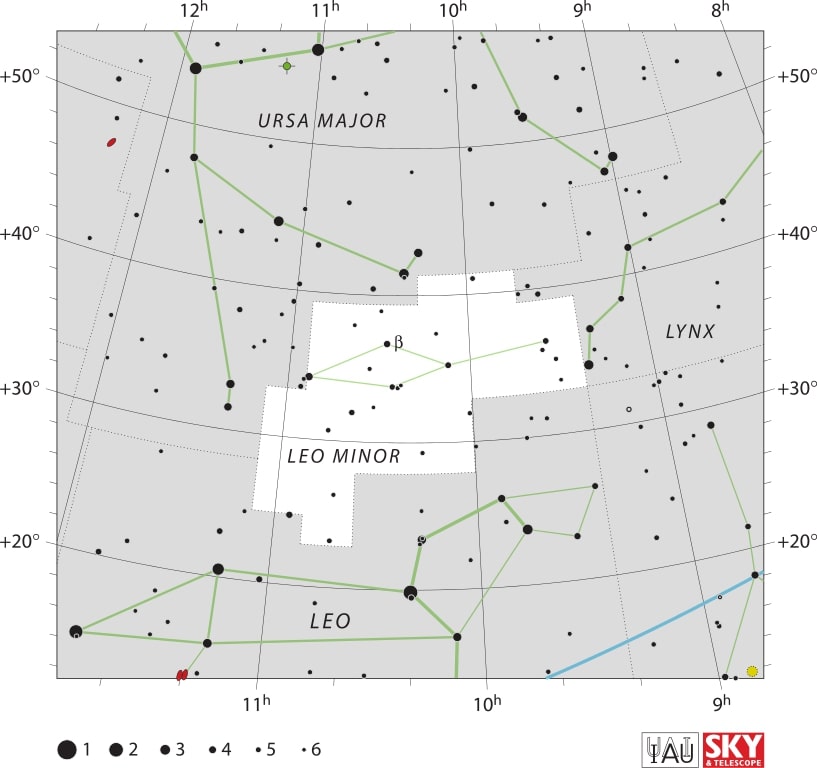
October 28: Partial lunar eclipse
A partial lunar eclipse happens when the Moon passes through the Earth’s partial shadow, or penumbra, but only a part of it passes through the darkest shade, or umbra. During this type of eclipse, a section of the Moon will darken as it passes into the Earth’s shadow.
The eclipse will be visible throughout Europe, Asia, Africa, and western Australia, but unfortunately not to us here in North America.
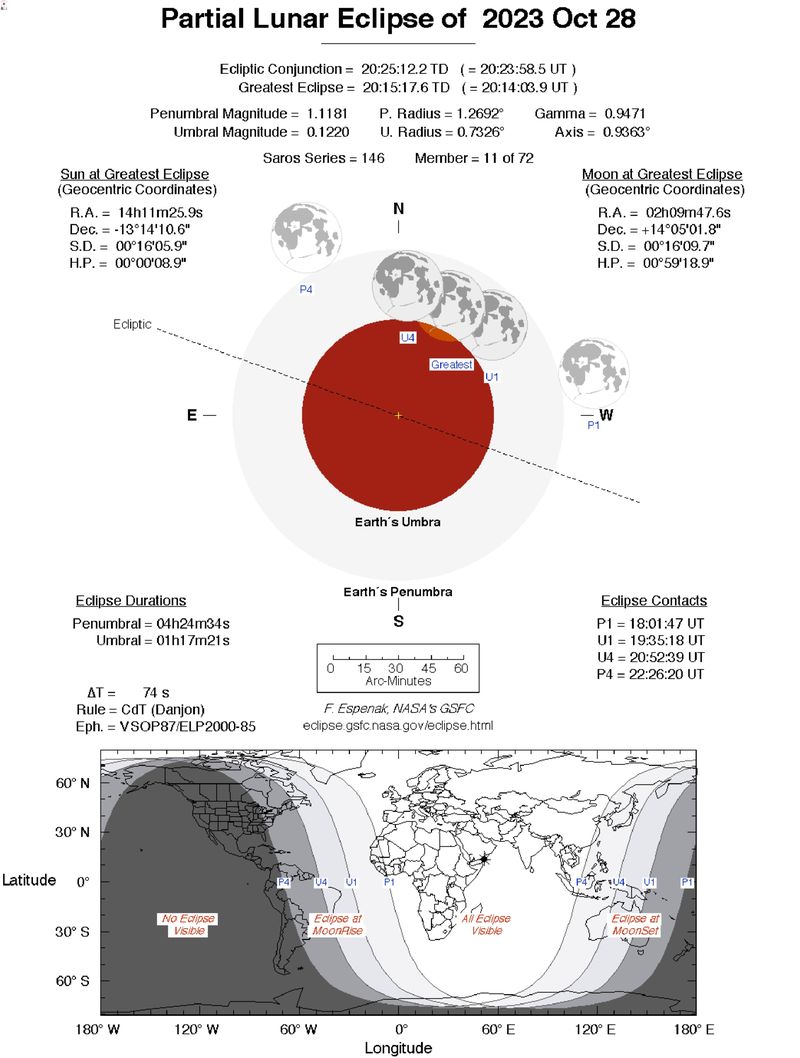
October 29: Conjunction of the Moon and Jupiter
The Moon and Jupiter will be at conjunction again this month of October by sharing the same right ascension and passing within 3°08′ of each other.
At around the same time the two bodies will also make a close approach (appulse) reaching 2°53′ from each other, but not sharing the same right ascension.
Both bodies will be visible in the constellation Aries with the Moon at apparent magnitude of -12.7 and Jupiter at -2.9. The Moon will be 15 days old or waning gibbous.
Moon Phases in October 2023
As you know, the Moon has a big impact on the visibility of celestial bodies in the night sky. So here are the Moon’s phases for this month:
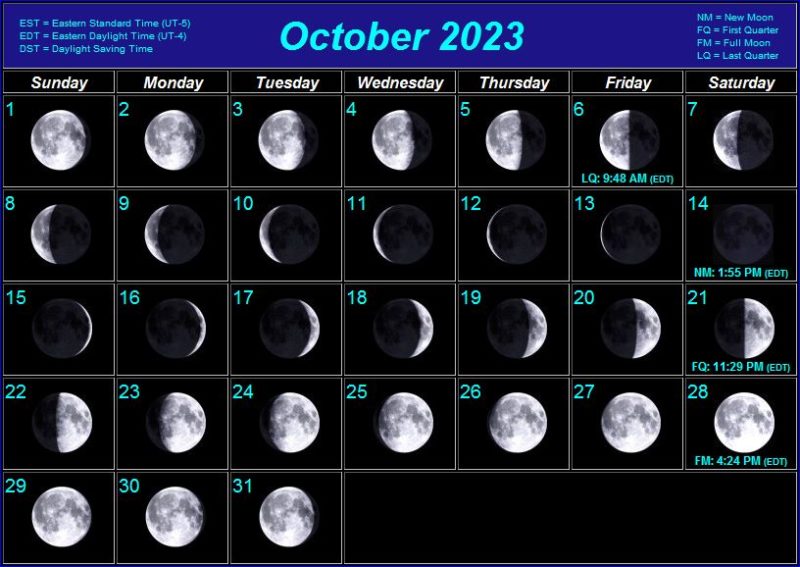
Positions of the Planets in October 2023
Mercury: The closest planet to the Sun can be seen at dawn and dusk travelling across the constellation of Leo. This planet, being the closest to the Sun, will appear to move quickly in the night sky and its position will change in the following weeks.
Venus: The sister planet can be seen travelling across the constellation of Leo. Just like Mercury, Venus can only be seen at dawn and dusk.
Mars: The red planet can be seen in the constellation of Virgo.
Jupiter: The gas giant is visible in the constellation of Aries. Jupiter can easily be spotted with the naked eye, even in highly illuminated cities.
Saturn: The ringed giant can be seen with the naked eye in the constellation of Aquarius.
Uranus: The gas giant can be seen in the constellation of Aries with the use of a telescope.
Neptune: The blue giant requires a telescope pointed in the constellation of Pisces in order to be seen.
Positions of Dwarf Planets and Large Asteroids in October 2023
Ceres: The asteroid belt’s lone dwarf planet can be seen in the constellation of Virgo with the help of a telescope.
Vesta: This large asteroid can be seen in the constellation of Orion with a telescope.
Pallas: The asteroid can be observed with a telescope in the constellation of Virgo.
Pluto: This distant dwarf planet can be found in the constellation of Sagittarius with the help of a large telescope.
Major astronomical events next month – November 2023
- November 1 – Jupiter at perigee.
- November 3 – Jupiter at opposition.
- November 5 – Asteroid 18 Melpomene at opposition.
- November 10 – Comet C/2023 H2 (Lemmon) at perigee.
- November 12 – Northern Taurid meteor shower peak.
- November 13 – Uranus at opposition.
- November 17 – Leonid meteor shower peak.
- November 21 – α-Monocerotid meteor shower peak.
- November 28 – November Orionid meteor shower peak.
Conclusion
As October draws to a close, we reflect on the awe-inspiring celestial spectacles that graced the night sky. From planetary rendezvous to meteor showers and eclipses, this month’s astronomical events provided a captivating journey through the cosmos. Each event brought its own unique charm, reminding us of the boundless wonders that lie beyond our earthly realm. As we eagerly anticipate the celestial wonders of the coming months, let us carry with us the sense of wonder and curiosity kindled by October’s dazzling displays. Until next time, keep looking up!
Sources:
- Planetary ephemerides produced by NASA’s Jet Propulsion Laboratory (JPL)
- International Meteor Organization
See also:
- Previous month’s calendar: Stargazing Calendar for September 2023
- Next month’s calendar: Stargazing Calendar for November 2023
Would you like to receive similar articles by email?



